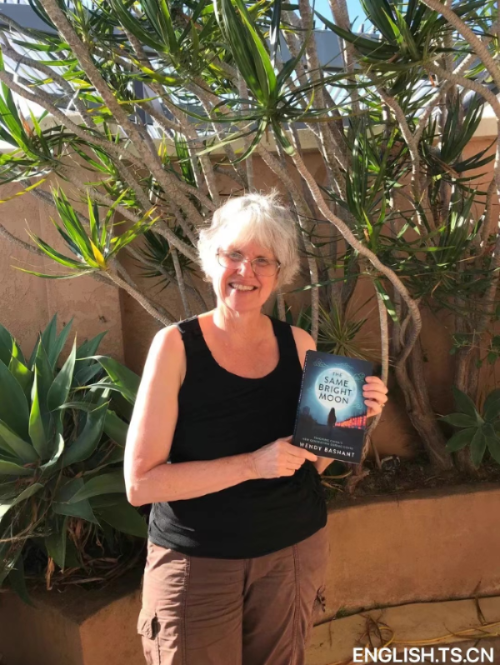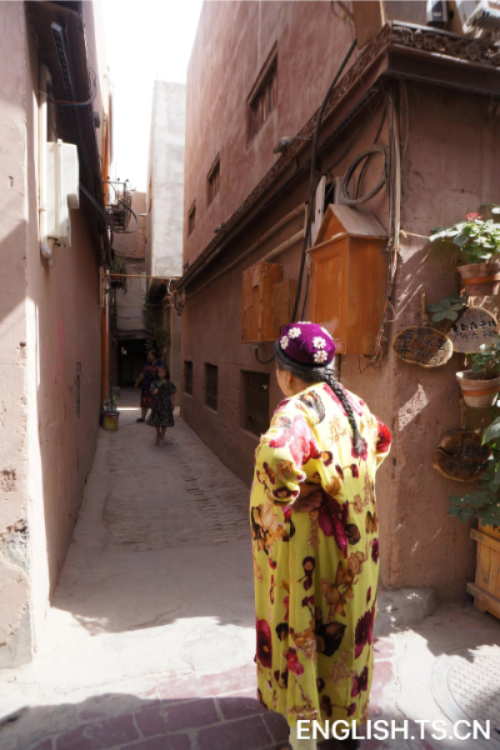The 2024 Xinjiang Tourism Development Conference and Xinjiang International Travel Agent Conference was held on May 27 in the city of Turpan in northwest China's Xinjiang Uygur Autonomous Region, aiming to promote exchanges and cooperation with domestic and foreign cultural and tourism enterprises, and build a grand development pattern for Xinjiang's cultural and tourism industry. Xinjiang, is a place where the past and present mix, creating a vibrant landscape that calls out to be explored. So, pack your bags and set your compass to the enchanting Xinjiang, where every moment is a discovery and every discovery is a treasure. This isn't just a trip; it’s a journey to the heart of diversity and beauty.

Apsatarova Aruuke, Kyrgyzstani international student at Beijing Foreign Studies University: The International Grand Bazaar is a melting pot of cultures, where you can experience local traditions firsthand. From traditional Uygur doppas to exquisite handicrafts, there's an incredible array of goods available here. Walking around the Grand Bazaar is like stepping into a kaleidoscope of cultures. The vibrant colors of ethnic costumes, the aroma of street food, and the melodies of ethnic music transport you to another world, with new discoveries at every step.
The local cuisine is another noteworthy aspect, as Xinjiang's food is a fusion of flavors and traditions influenced by the Uygur, Han, Kazak, and other cultures. One of the most renowned dishes is hand-pulled noodles, served with a spicy meat and vegetable sauce. Pilaf made from local rice, which is favored for its ability to absorb all flavors and spices, is equally popular. These dishes are also available in my country, so I feel at home. I can say with certainty that this trip caused me to gain weight, as all the food was exceptionally delicious.

Hendy Yuniarto, Indonesian expert at Beijing Foreign Studies Unviersity: Xinjiang society is a hard-working society. In Yangbulake village, the Uygur and Kazak communities have meticulously maintained their cultural heritage, particularly their traditional art performances and culinary practices, which have been handed down through generations. In Nalati grassland they are excellent herders of goats, cows, horses, and camels. Beyond their agricultural endeavors, the community is also actively developing both natural and cultural tourism sectors. In the Nalati meadows, they offer horseback riding, staying in a yurt, tasting mare's milk, and watching a Kazak wedding ceremony. The unique cultures and traditions of the Uygurs and Kazakhs offer a distinct and captivating experience for many visitors.
Traveling through Xinjiang is like walking through a living museum, where each corner offers a new exhibit, each face tells a story, and each meal is a journey. From Urumqi's vibrant International Grand Bazaar to Tacheng’s quiet dignity, from Ili’s cultural diversity to Nalati’s pastoral symphony, Xinjiang is a place worth visiting. For the adventurous souls and the curious hearts, Xinjiang offers more than just sights; it offers stories. The region's vastness is matched only by the warmth of its people and the depth of its cultures. Whether you are navigating the bustling streets of Urumqi or the serene pastures of Nalati, the province beckons with tales waiting to be told and memories waiting to be made.

Wendy Bashant, former professor at Xi’an Jiaotong University: One of the top sites to visit in Xinjiang is Kanas Lake and Scenic Area, a popular spot that offers a deep dose of natural beauty. The area boasts a mosaic of snow-capped mountains, grasslands and forests. Kanas Lake is long and meandering, a thin body of water that curls through towering mountains and lowlands. The lake was carved by glaciers 200,000 years ago. From the air, it looks like a sea-serpent sunning itself in the valleys that wind through the Altai Mountains. Its dark sapphire blue reflects the clear sky. The Altai Mountains are a chain that covers 1,200 miles, stretching through China, Mongolia, and Russia. They start as gentle foothills, but gradually turn to rugged peaks that reach almost 15,000 feet into the deep cerulean sky.
The best time to visit the region is early fall, when the birches turn amber. The reflection of the saffron leaves shimmers in the deepest freshwater lake in China, turning the lake’s surface into something akin to an elegant Tiffany lamp.

Ryoka Yukitake, Japanese student studying in the College of International Education of Minzu University of China: Last summer, I embarked on a backpacking trip across various parts of China. Among them, my experience in Xinjiang remains unforgettable to this day. What sets Xinjiang apart is not only its breathtaking landscapes, but also the unique blend of cultural charm, natural beauty, and delectable cuisine. The region’s rich history, traditional culture, and harmonious coexistence of multiple ethnic groups contribute to its diverse cultural tapestry.
The clothing culture in Xinjiang is particularly fascinating. On the streets, I saw many locals wearing embroidered shirts with distinct ethnic characteristics, known as Atlas silk. The people dressed in these exquisite traditional costumes had happy and joyful expressions on their faces, just as the scene depicted by a verse in the Peach Blossom Spring, a masterpiece by Chinese poet Tao Yuanming (around 365-427). The verse goes “All of them, whether old people with white hair or children with their hair tied in a knot, were happy and content with themselves.”

Serdar Yurtcicek, postdoctoral researcher at Shanghai University: The mountains surrounding Xinjiang’s Turpan were barren and extremely hot, so much so that some are named “Flaming Mountains”. There's not a tree or a puddle in sight as far as the eye can see. The outskirts of Urumqi are somewhat better but still quite arid. However, upon seeing the foothills of the Tianshan Mountains on my last day, I couldn't believe my eyes. Here was a mountain range covered with forests, just 50 km from Urumqi and 300 km from the desert, adorned with waterfalls, crystal clear rivers, squirrels, and weasels scampering through the trees, all under a brilliantly blue sky. I witnessed the temperature dropping to 15 degrees Celsius, whereas it had been 45 degrees in Turpan just a day before.
In such a vast and challenging geography, with deserts, forests, and mountains under a blue sky, experiencing all shades of heat and cold, Uygurs, Hans, Kazaks, Huis, Kyrgyz, Mongols, and others live in harmony. In Xinjiang, geography harmoniously accommodates the yellow of the desert, the brown of the mountains, the green of the forests, the blue of the sky, and the white of the clouds, despite all odds, and people embrace diversity. Here, geography coexists, and so do humans. People here breathe under the same sky, seek shelter from the same rain, and spread love among their neighbors and their brethren.

Faiza Muhammad Mustapha, Nigerian expert journalist of CGTN: Waking up to beautiful mornings, crystal clear skies and refreshingly cool breeze. Being greeted by smiling faces at every corner. Indeed, it is difficult not to appreciate the beauty that lies in that land. My creative spirit was rekindled, words long fermented in my head, gushing out in my writing like mountain falls.
Imagine being in a slow-moving boat, enjoying a cup of warm milk tea, a sight of a clear blue sky, surrounded by green plants, and then looking directly at glaciers! Indeed, beauty lies in Nature. For instance, I wish you could see the big smile on my face when I suddenly remember my visit to the famous Tianshan Tianchi. A well-known tourism site in Xinjiang. I consider it the definition of Nature’s Beauty; with green tall mountains, green grassland, trees, a beautiful lake, and waterfalls. The sound of water gushing, birds chirping and the cool atmosphere gave me a serenity I never really imagined possible in Xinjiang. And the glaciers? That was the first time in my life to come close to such a beauty! It was magical and picturesque.
Planner : Jie Wenjin
Reviewers : Hou Weili and Cheng Li









